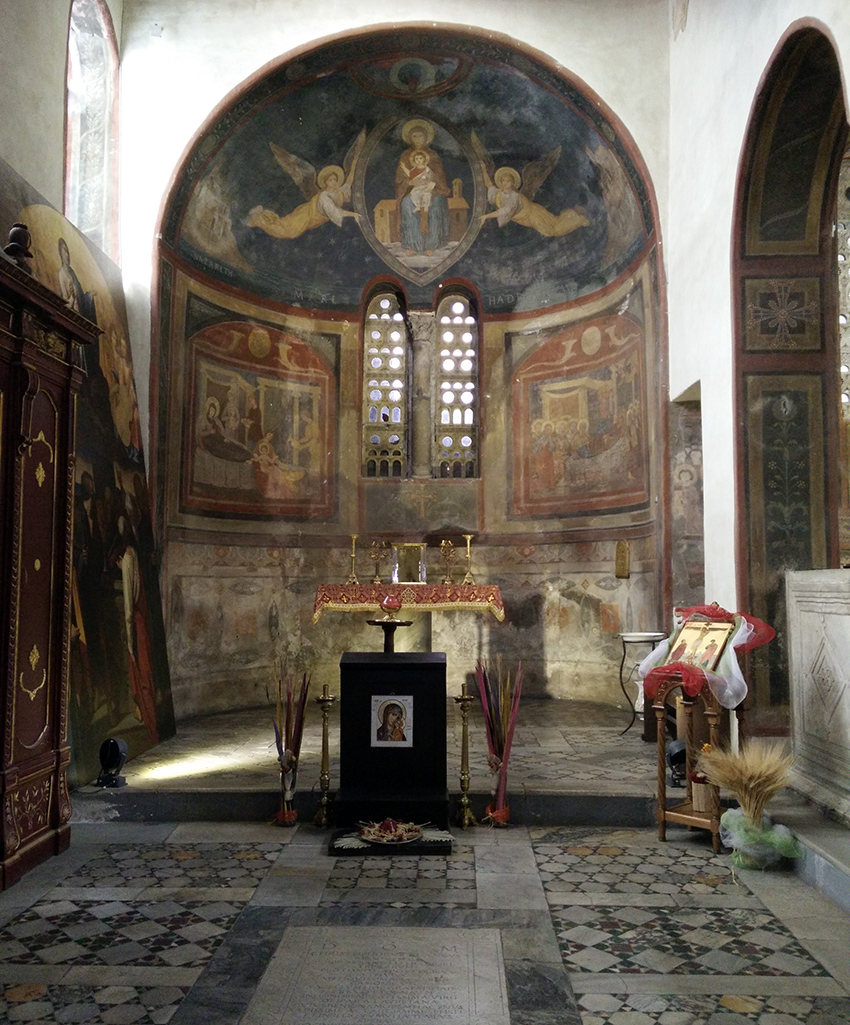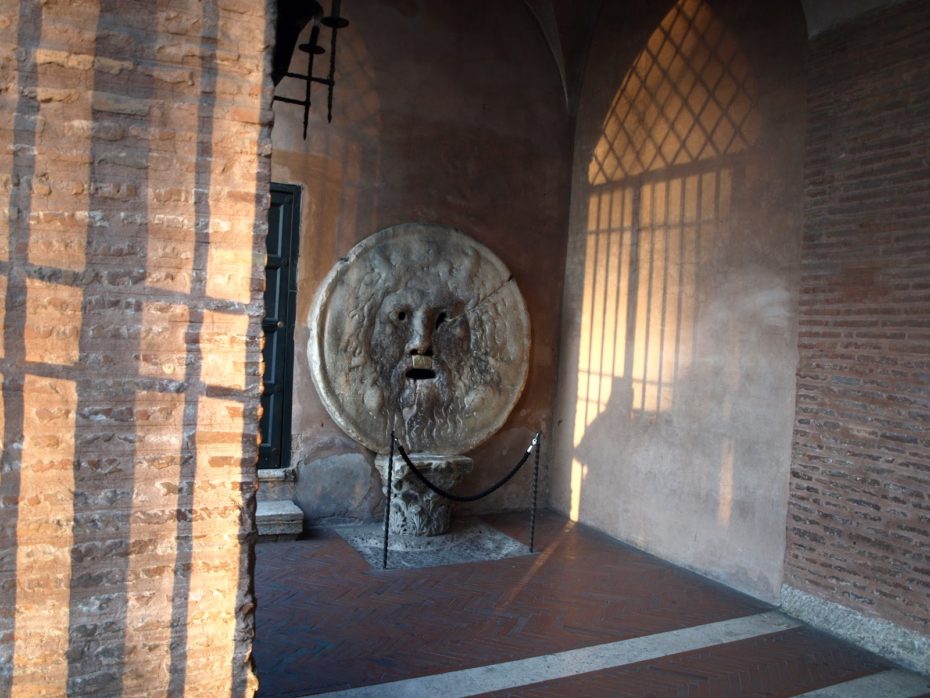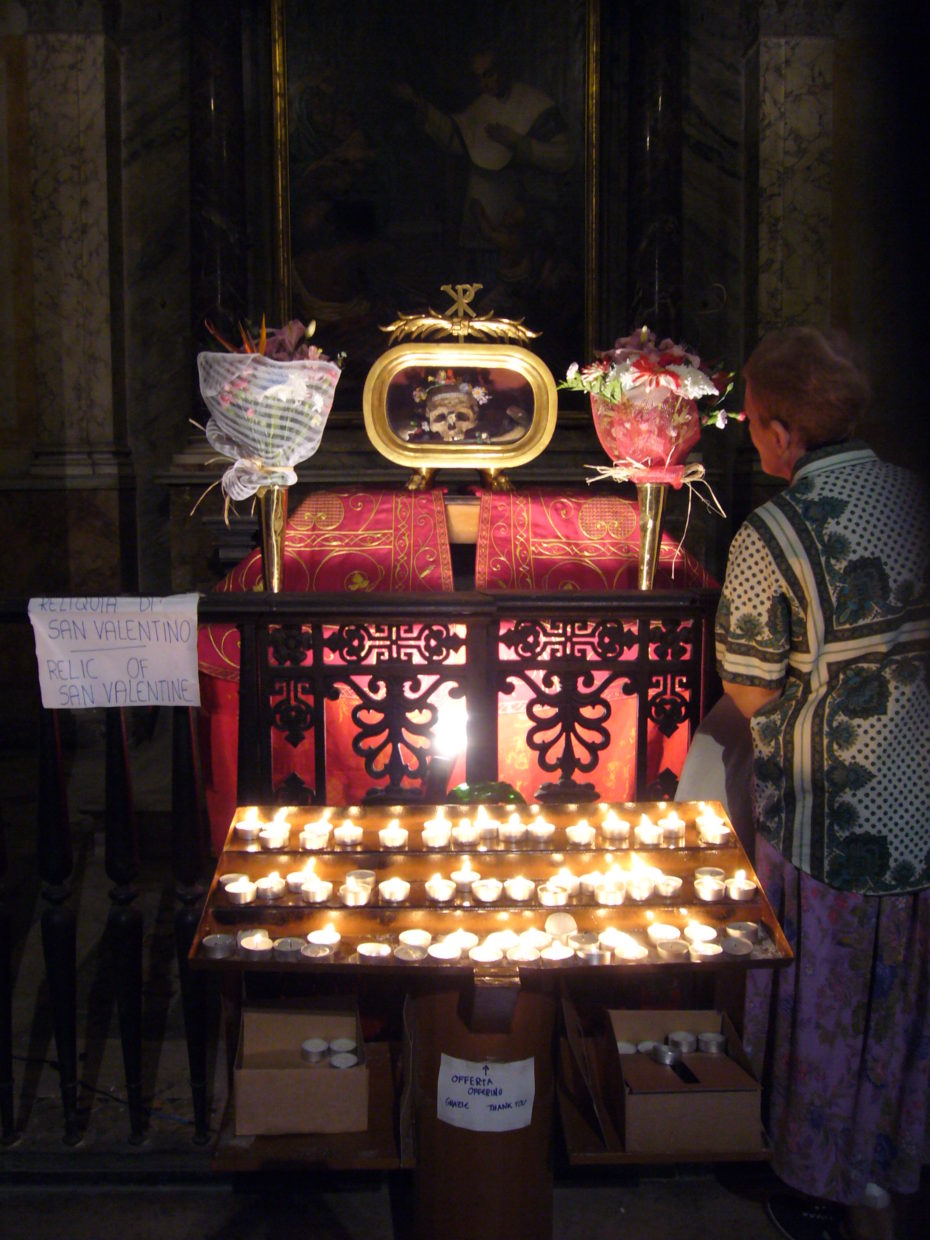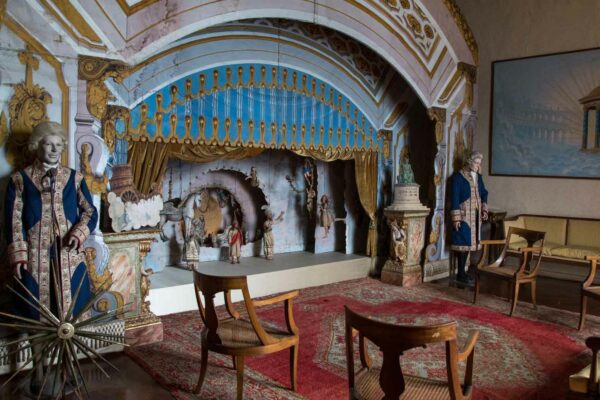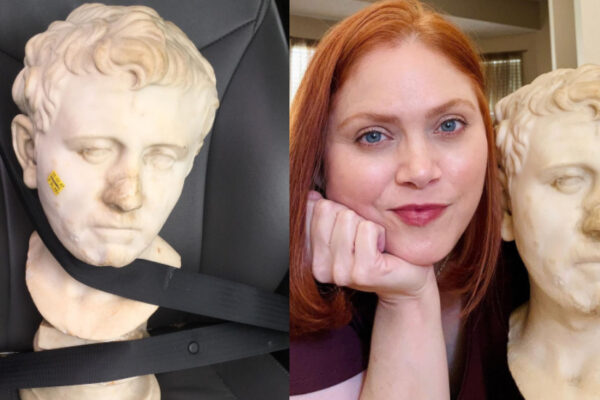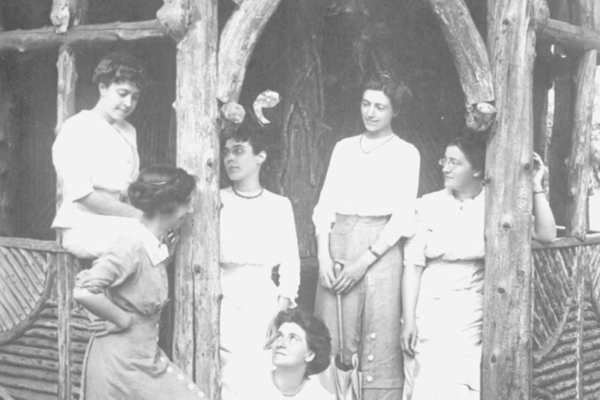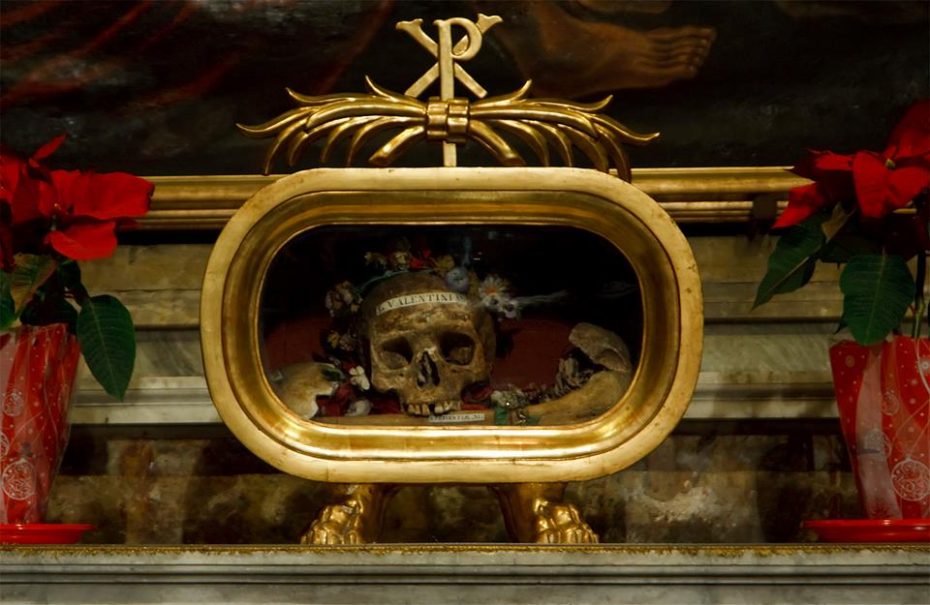
The relics of Saint Valentine.
That’s right, there really was a flesh-and-blood Italian behind the kitsch holiday we’ve got today, and he went by the name of Saint Valentine. Unfortunately for Valentine, however, the day-turned-holiday marked his tragic end, as the martyr was clubbed to death in Rome on February 14th, 269 AD. But you can still go blow a kiss to his relics, which reside in the tiny basilica of Santa Maria in Cosmedin in Roma.
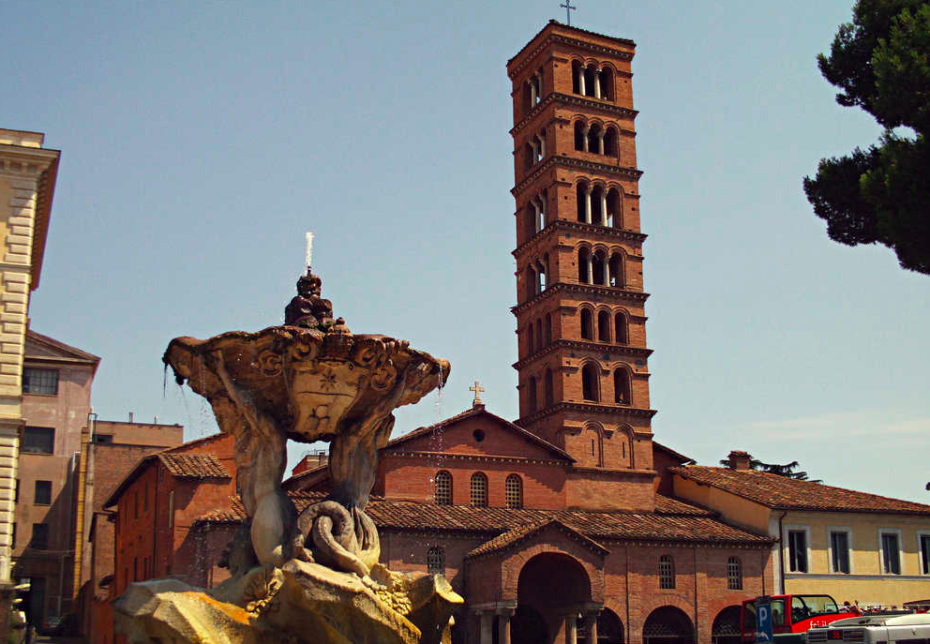
© Reidsitaly Santa Maria in Cosmedin
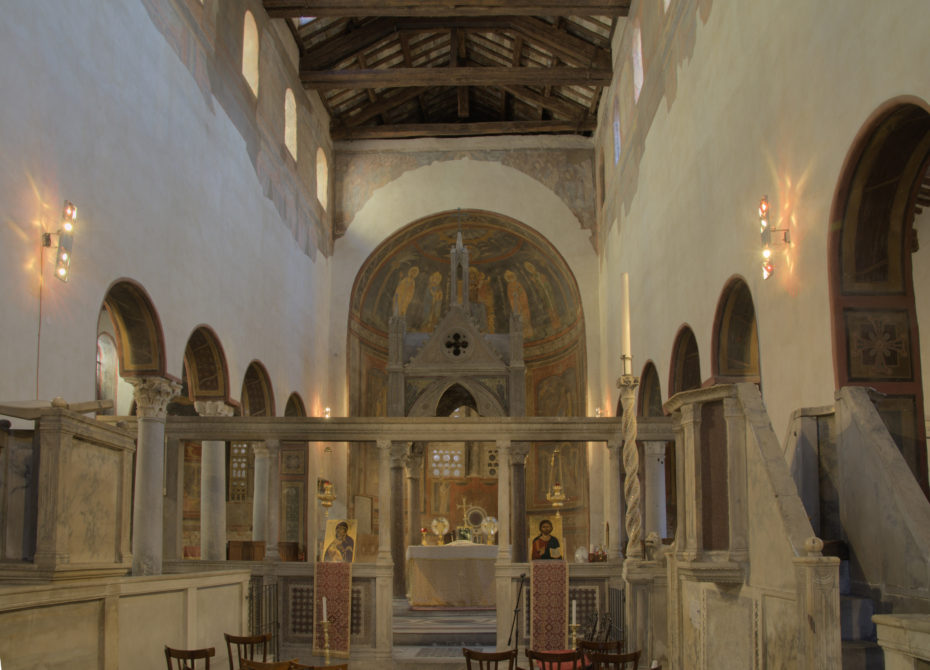
The 8th century church isn’t as ornate as Rome’s other churches, but it has a certain, austere charm. The site’s towering red belfry always seems to pop up on the Roman horizon-line, and it boasts some lovely frescos.
The basilica is also famous for housing the spooky Bocca della Verità, or “Mouth of Truth,” the ancient sewer grate that Audrey Hepburn famously made Gregory Peck stick his hand in during 1953’s Roman Holiday:
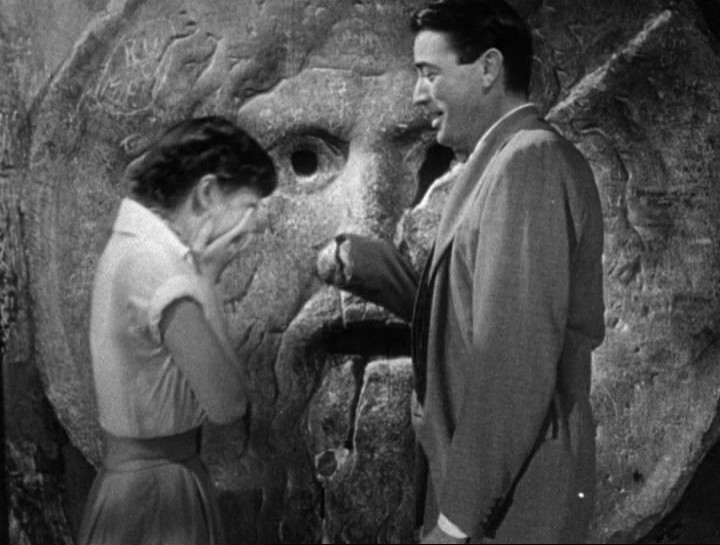
Hepburn and Peck in Roman Holiday (1953).
Typically, tourists line up for ages to have a go at the giant marble mouth, as legend has it that a dishonest person will get their digits nipped off if they stick their hand inside (luckily, no such reports have been found). Most importantly, the famous “mouth of truth scene” helped Hepburn and Peck’s characters fall head-over-heels in love, which brings us back to the man of the hour…
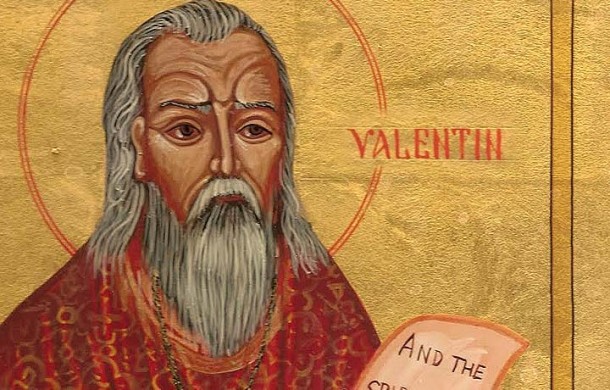
St. Valentine.
The life and times of Valentine remain shrouded in mystery, and historians are constantly bickering as to which origin story rings true. We know that he lived during the reign of Emperor Claudius, who forbid the marriage of young lovers with the logic that an unattached soldier would fight better with no wife on the home-front to live for. So yeah, he was a major killjoy.
Valentine, a Christian priest at the time, took to marrying couples in secret. But word eventually spread of his mischievous ceremonies, and he ultimately was sentenced to a three-part execution of beating, stoning, and decapitation.
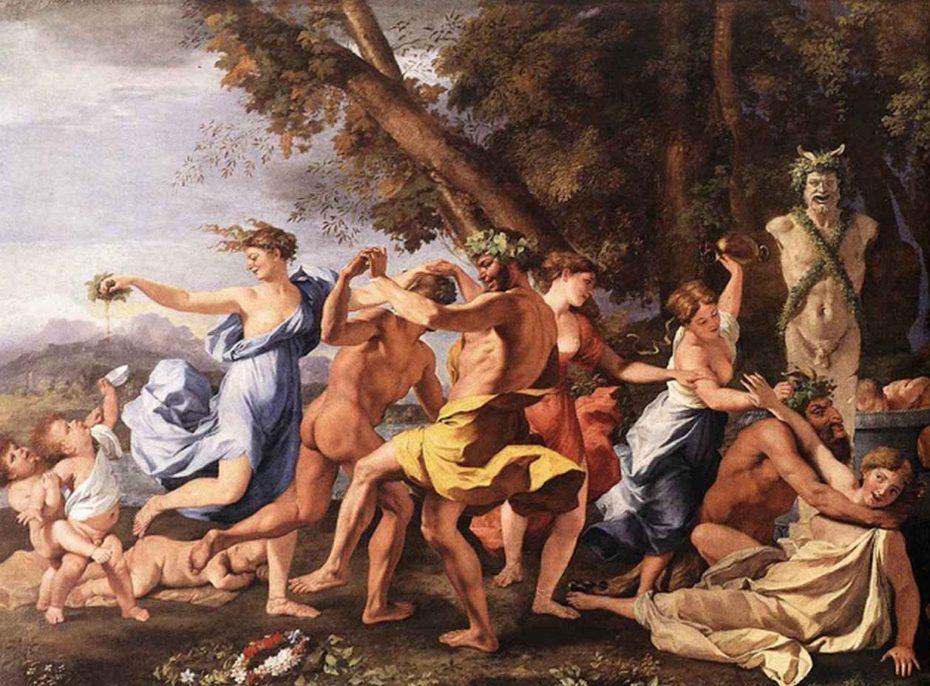
“Lupercalia” (N. Poussin, Baccanali davanti alla statua di Pan, 1631).
As time went on, Saint Valentine’s legacy morphed into an annual celebration of love within the church, with Pope Gelasius I, declaring February 14th as a Christian feast day in his honour in 496. Some historians also cite an ulterior motive to the holiday’s creation: replacing the pagan Lupercalia, a steamy fertility feast with lots of animal sacrifice and dancing.
St. Valentine’s bones were discovered during a 19th century excavation in the Roman catacombs, and his other skeletal remains are dotted all across Europe and the U.K. In truth, there have been multiple discoveries of what many claim to be Valentine’s real remains. But that hasn’t stopped Romans from making an annual pilgrimage to the flower-crowned, candle-lit skull of of the patron saint of love. Now that’s amore.
By Mary Frances Knapp, our Californian in Paris & beatnik at heart.


